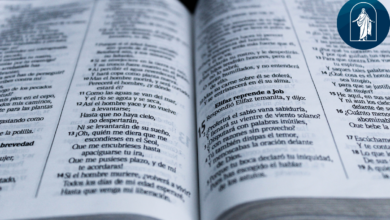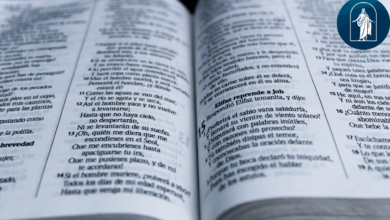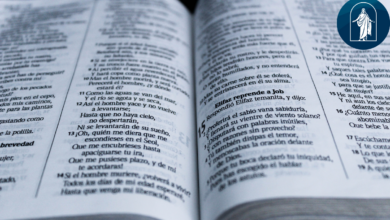1 Kings, Chapter 7:
advertising
Verses from 1 Kings, Chapter 7 of the book of 1 Kings of the Bible.
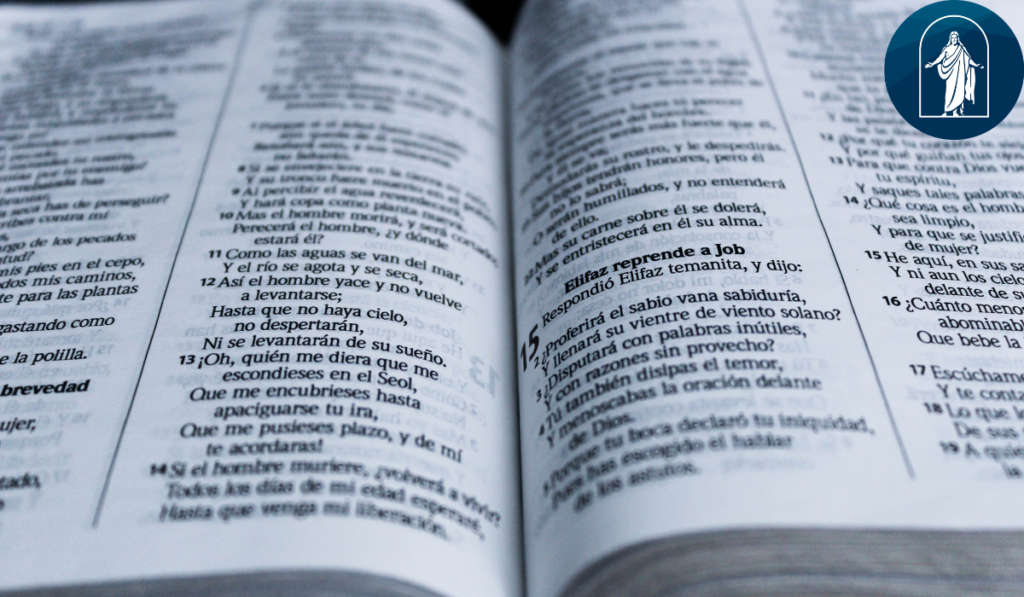
Solomon's palace
- 1. It took Solomon thirteen years to complete the construction of his palace.
- 2. The Palace of the Forest of Lebanon, which he built, was forty-five meters long, twenty-two and a half meters wide and thirteen and a half meters high. The palace was supported by four rows of cedar columns, upon which were supported carved cedar beams.
- 3. The ceiling of the palace was made of cedar, made up of forty-five beams, fifteen in each row, which supported the columns.
- 4. The windows were arranged in groups of three, one in front of the other.
- 5. All the doors were rectangular in shape and arranged in groups of three, facing each other.
- 6. There was a portico with columns twenty-two and a half meters long and thirteen and a half meters wide. In front of it was another portico with columns and a roof that extended beyond the columns.
- 7. Solomon built the Throne Room, also known as the Hall of Justice, where he would judge, and covered it with cedar, from floor to ceiling.
- 8. Furthermore, in the other courtyard he built a palace for his dwelling, similar in shape. Solomon also built a palace like this for Pharaoh's daughter, whom he had married.
- 9. All of these buildings, from the outside to the large courtyard, and from the foundation to the eaves, were made with high-quality stones, cut to size and roughed with saws on both the inside and outside.
- 10. The foundations were made with large stones of high quality, some measuring four and a half meters and others measuring three meters and sixty centimeters.
- 11. In the upper part, high-quality stones, cut to size, and cedar beams were used.
- 12. The great courtyard was surrounded by a wall made up of three layers of hewn stones and one layer of cedar beams, just like the inner courtyard of the temple of the Lord with its porch.
Temple furniture
- 13. King Solomon sent messengers to Tire and brought Huram.
- 14. Huram was the son of a widow from the tribe of Naphtali and a man from Tyre. He was a skilled and experienced bronze craftsman, capable of doing all types of bronze work. He presented himself to King Solomon and performed all the tasks assigned to him.
- 15. He cast two bronze columns, each eight meters and ten centimeters high and five meters and forty centimeters in circumference, measured with the appropriate thread.
- 16. He also made two capitals of cast bronze to place on the top of the columns, each two meters and twenty-five centimeters high.
- 17. There were sets of interlocking chains that adorned the capitals at the top of the columns, seven sets on each capital.
- 18. Pomegranates were also made in two rows around each set of chains that covered the capitals at the top of the columns. The same was done with each capital.
- 19. The capitals at the top of the portico columns were shaped like lilies, six feet tall.
- 20. On the capitals of the two columns, above the cup-shaped part, next to the sets of chains, there were two hundred pomegranates in a row around them.
- 21. Solomon erected the columns in front of the portico of the temple and named the southern column Jakim and the northern column Boaz.
- 22. The capitals at the top of the columns were shaped like lilies. Thus, work on the columns was completed.
- 23. Huram also made a round cast bronze tank, four and a half meters in diameter and two meters and twenty-five centimeters high. Thirteen and a half meters of thread were needed to measure its circumference.
- 24. Around the edge and along its entire length were two rows of carved fruits, every two inches, all fused into a single piece with the tank.
- 25. The pool sat on twelve oxen, three facing north, three facing west, three facing south and three facing east. The tank was supported by them, and the hind legs of the oxen were facing the center.
- 26. The thickness of the pool was four fingers, and its rim was like that of a chalice or the flower of a lily. Its capacity was forty thousand liters.
- 27. Huram also made ten bronze chariots, each four feet long and wide, and four feet high.
- 28. Carts were built with side plates attached to the frames.
- 29. On the plaques, between the structures, there were figures of lions, oxen and cherubim. Above and below the lions and oxen on the structures were wreaths of beaten metal.
- 30. Each cart had four bronze wheels with bronze axles. Each wheel had a basin supported on four feet and was cast next to each wreath.
- 31. Inside each cart, there was a circular opening eighteen inches deep. This opening was round and was seventy centimeters in diameter at its base. There were sculptures around the opening. The cart plates were square, not round.
- 32. The four wheels were below the plates, and the wheel axles were attached to the platform. The diameter of each wheel was seventy centimeters.
- 33. The wheels were made like the wheels of a chariot, with axles, rims, spokes and hubs of cast bronze.
- 34. There were four supports that projected from each cart, one at each corner.
- 35. At the top of each cart was a circular blade twenty-two centimeters high. The structures and plates were fixed to the top of the carts.
- 36. Huram carved figures of cherubs, lions, and date palms on the structures and plaques, in every available space, with garlands around them.
- 37. This is how the ten carts were made. They were all cast in the same molds and were identical in size and shape.
- 38. Huram also made ten bronze lavers, each with a capacity of eight hundred liters, measuring one meter and eighty centimeters in diameter. There was a sink for each of the ten carts.
- 39. Solomon placed five carts on the south side of the temple and five on the north side. He placed the tank on the south side, in the southeast corner of the temple.
- 40. Huram also made the pitchers, the shovels, and the sprinkling basins. Thus, Huram completed all the work assigned to him by King Solomon in the temple of the Lord:
- 41. the two columns; the two cup-shaped capitals at the top of the columns; the two sets of chains that adorned the capitals;
- 42. the four hundred pomegranates for the two sets of chains; two rows of pomegranates for each set;
- 43. the ten carts with their ten sinks;
- 44. the pool and the twelve oxen under it;
- 45. in addition, the pitchers, the shovels and the sprinkling basins. All these utensils that Huram made at the request of King Solomon for the temple of the Lord were of polished bronze.
- 46. They were cast in the plain of the Jordan, between Succoth and Zarethan, in clay molds.
- 47. Solomon did not weigh all these utensils, for there were so many that the weight of the bronze was not calculated.
- 48. In addition to these utensils, Solomon ordered the following to be made for the temple of the Lord: the golden altar; the golden table on which the bread of the Presence was placed;
- 49. the lampstands of pure gold, five on the right and five on the left, in front of the inner sanctuary; the flowers, the lamps and the golden tongs;
- 50. the basins, the wick trimmers, the sprinkling basins, the bowls and the censers; and the golden hinges for the doors of the inner room, that is, the Most Holy Place, and also for the doors of the main court.
- 51. When all the work that Solomon had done for the temple of the Lord was completed, he brought everything that his father David had consecrated and placed it together with the treasures of the temple of the Lord: the silver, the gold and the utensils.
